How a legendary Final Four run changed lives at Loyola
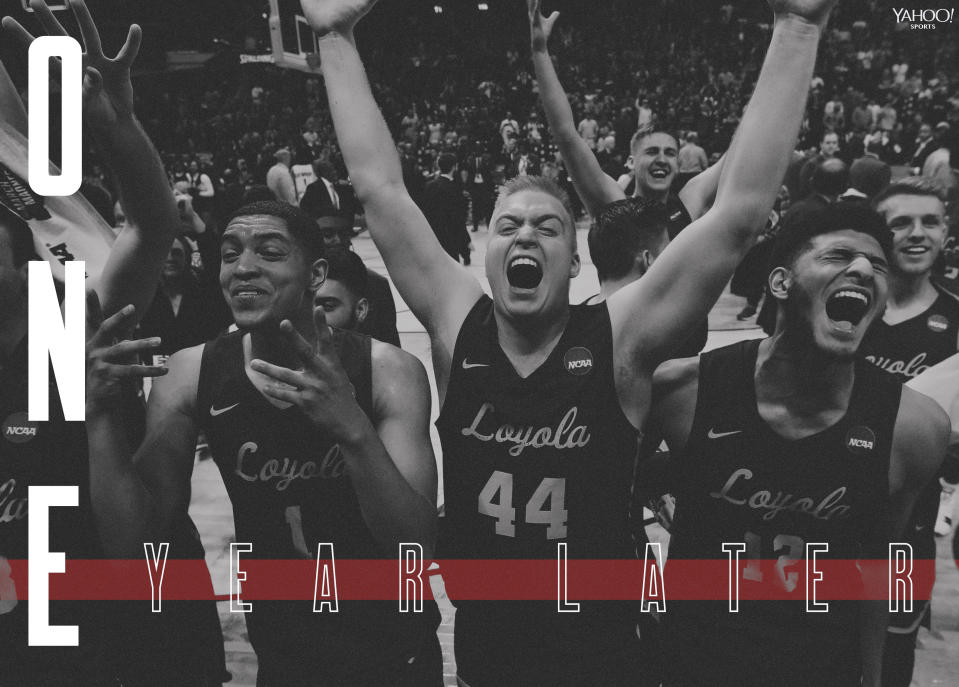
Thousands of miles and hundreds of days removed from the weekends that forever changed his life, with daylight long gone along the Icelandic coast, Aundre Jackson would, every so often this winter, decide to indulge. It wasn’t a daily routine, more so a reminiscer’s impulse. Occasionally, after FIFA but before sleep, in a quiet bedroom about an hour north of Reykjavik, a laptop would flip open. YouTube would beckon, its search bar unnecessary because the destination, thanks to prior viewing habits, was already staring back at him.
Loyola Chicago vs. Miami: Relive the buzzer-beating thriller in 10 minutes, the first recommendation might read.
Then, after a click and an evocative experience, at the top of the “Up Next” queue … Game Rewind: Watch Loyola Chicago take down Tennessee in 10 minutes.
In between games for Skallagrimur, his first pro club in a remote Icelandic town of 2,000, on and on Jackson would go, down the most enjoyable of rabbit holes, one he and a handful of brothers famously dug last March. “Once I see one pop up,” he says of the highlight videos, “I click on it every time.” And he isn’t alone. “They honestly just appear sometimes,” says then-teammate, now-Fortnite accomplice Marques Townes. “It’s hard to get away from them.”
For others, visuals aren’t required. “To be honest,” says Ben Richardson, “I still think about [how] we shoulda beat Michigan [in the Final Four].”
“All the time,” Clayton Custer echoes.
And Donte Ingram: “Sometimes I beat myself up about it.”
But then he’ll pause. His mind will recalibrate. And he’ll realize: The Loyola-Chicago fairytale, the one in which he played a starring role, was unfathomably special. Its lessons were potent, its reach unknowably vast.
It has now been over a year since the Ramblers won your hearts; snatched them with a buzzer-beater and a 98-year-old nun and a dozen down-to-earth kids; and for two glorious weeks never let go. In the months that followed their charge to the Final Four, the fairytale’s protagonists scattered – to Iceland and Poland and Frisco, Texas; or back to Chicago to win another Missouri Valley title. A conference tournament semifinal loss moistened cheeks and shuttered dreams of a sequel. Which is why this Cinderella story, for many, has faded to black.
But to those protagonists, it is unforgettable. Infinitely relivable. Life-altering. Because, as the team’s upperclassmen and head coach Porter Moser tell it, only in the aftermath of their magical run did they come to comprehend its transformative power.
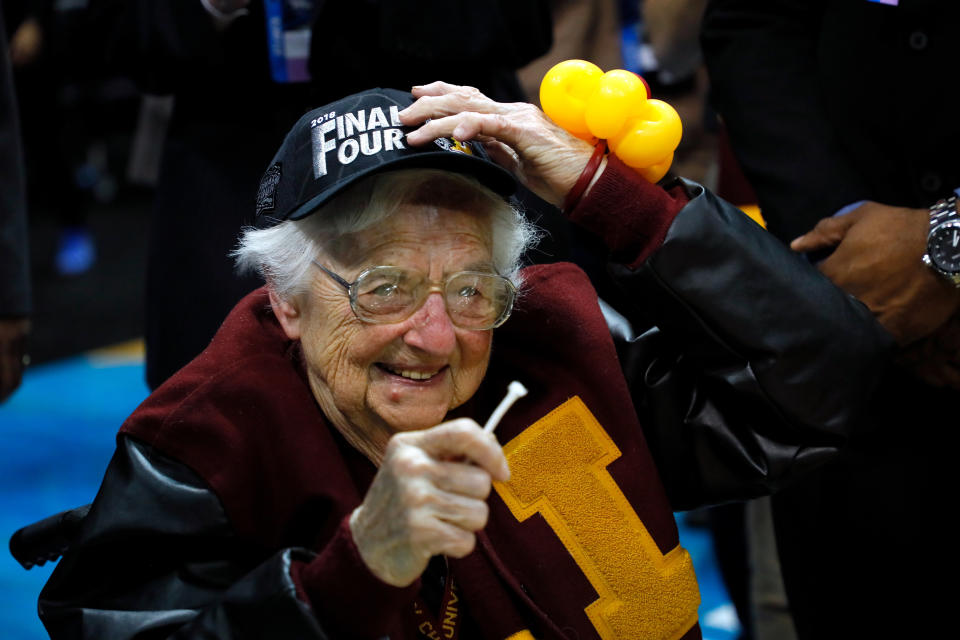
Deep impact
Sprinkled throughout the journey were glimpses of its impact. There were the rousing receptions upon returns to campus; the congratulatory tweet from President Obama; the Chicago skyline, illuminating the city in maroon and gold. The “GO LOYOLA” message on one building took Moser back to October 2016, his memory vivid, of the same skyscraper commemorating the Cubs’ World Series title. “That’s the coolest thing in the world,” he thought at the time. Eighteen months later, his previously-ignored basketball program was being held in similar esteem.
Yet his players were so singularly focused on extending the run, game by game, that, between rounds and flights and new hotels and practices, the big picture eluded them. Not until the week after the Michigan loss, they say, did their visions broaden.
“Growing up, watching [the NCAA tournament], you kind of idolize these guys as legends,” Richardson says. “I didn’t feel it when I was playing. … But I saw that coming up, and how being in that position, you kinda become larger than life, you represent things bigger than a basketball game. It turns into this phenomenon … Looking back, you definitely see the significance.”
Throughout the spring, they saw and felt it. There were appearance requests and attention. Pleas for autographs from strangers. Selfies all over campus. Photos with star-struck kids. There were ceremonial first pitches and “Take Me Out To The Ballgame” at Wrigley. There were skybox invites from the Blackhawks and Bulls. Moser even attended a gala with Michael Phelps.
The recognition extended far beyond Chicago. Sister Jean famously declared herself an “international celebrity.” Apparently she wasn’t exaggerating. When Richardson arrived in Poland and told his new Dabrowa Gornicza teammates where he played in college, they responded, Oh, you have the old lady nun! Icelandic youngsters recognized Jackson. Ingram, a day before our conversation, saw two Texas mall-goers sporting Loyola shirts. Richardson’s teammates, meanwhile, were astounded when they somehow turned on a TNT stream of a Manchester United-PSG Champions League match … only to see Richardson flash onto the screen in a promo for Turner’s March Madness coverage.
Their exploits, however, didn’t just change their own lives. They changed others. They connected old classmates for the first time in years. They united a campus and a city, and inspired dreamers coast to coast. They know they did, because the most common form of recognition was a simple “thank you.” An unsolicited message of appreciation. Moser still gets them, at the airport, out of the blue.
“And that’s a really cool dynamic, when you know you impacted somebody,” he says. “You impacted a place. You impacted a city. You impacted a university, an alumni base.”
The acknowledgements and attention have gradually dissipated over the past 12 months, but never really disappeared. Which is one of many reasons The Year After proved so difficult.
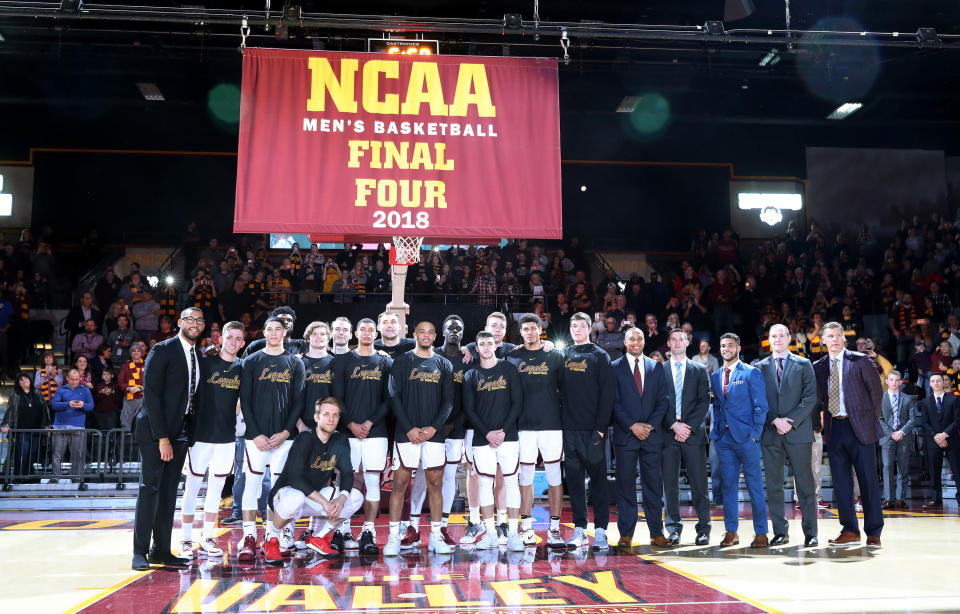
The pressure drops
The run introduced Loyola-loving basketball agnostics to the sport, many of whom had no clue how improbable 2018 was. Their ignorance shot external expectations to unreasonable heights. Well if you made the Final Four last year, the uninformed logic went, a national championship is a realistic goal this year, right?
Ironically, however, inside Gentile Arena during summer workouts, some players quietly concurred.
“We were going into the year thinking we could beat anybody, at any given time,” Custer says.
“Yeah,” says Townes. “I thought so, too.”
Richardson, before departing for Poland, watched on and felt similarly. “I was blown away. … I was thinking to myself, ‘We weren’t this advanced at this point in the summer last year. … The sky is the limit for them this year. They might go undefeated.’ ”
That mode of thinking, though, was problematic. As Townes explains, the previous summer, the idea of a Final Four was foreign. It never even entered players’ minds. The program hadn’t reached the NCAA tournament since 1985, after all. So that day-to-day focus, on the “process,” the type that eventually drove Loyola’s success in March, was feasible.
This time around, grander aspirations were inescapable. When the season arrived, thoughts of last year were as well. Publicly, players claimed to have blocked them out. And they certainly tried. But “it was impossible for me,” Custer admits. When early season losses amplified pressure and deflated spirits, “it was really hard to not think, ‘Why is it not working the same way as last year?’ ”
Moser was as prepared for the difficulties as could be. He spoke with former Butler coach Brad Stevens and Northwestern coach Chris Collins for lessons from their respective attempts to follow breakthrough seasons. He relayed that knowledge to his players.
But the questions about last year, the comparisons ... they simply never ceased. “Social media, the fans, the media, everywhere we went,” Moser says of the oft-feared outside noise. “We beat Valparaiso in the conference tournament, five of the first seven questions were about last year. We were trying to look out the front window, and everybody else was asking us about what we saw in the rearview mirror.”
Says Townes: “You try so hard not to think about last year. … You just can’t get away from it. You keep hearing it, constantly and constantly. Now you’re worried about the end result. Now you’re not really focused on what we have to do to win the games ahead of us. … So I guess we kinda lost sight of the process, and what we did last year to get to that end result.”
They also drew unusually rabid crowds everywhere they went – including 10,200, plus Larry Bird, at Indiana State. They fell victim to career-best performances, the proverbial target on their back proving troublesome. On scouting reports, they classify opposing guards as Rondos, Wades or Korvers based on shooting aptitude. Against the Ramblers and only the Ramblers, Custer says with an exasperated chuckle, Rondos suddenly morphed into Korvers. Townes would sit in silence in the locker room after games, dumbfounded.
“It was mind-blowing,” he says.
And yet, despite the external roadblocks, despite palpable pressure, unabating for four months, despite the opponent explosions, and despite losing Lucas Williamson (one of four returning rotation players) to injury for 18 games, Loyola still won the Valley. It claimed back-to-back conference crowns for the first time in program history.
So when the season, which ended with a first-round NIT loss to Creighton, got dubbed by some a disappointment, “that bothered me,” Moser says.
He also knows, however, that it’s an unseverable arm of the monster last year’s run created.
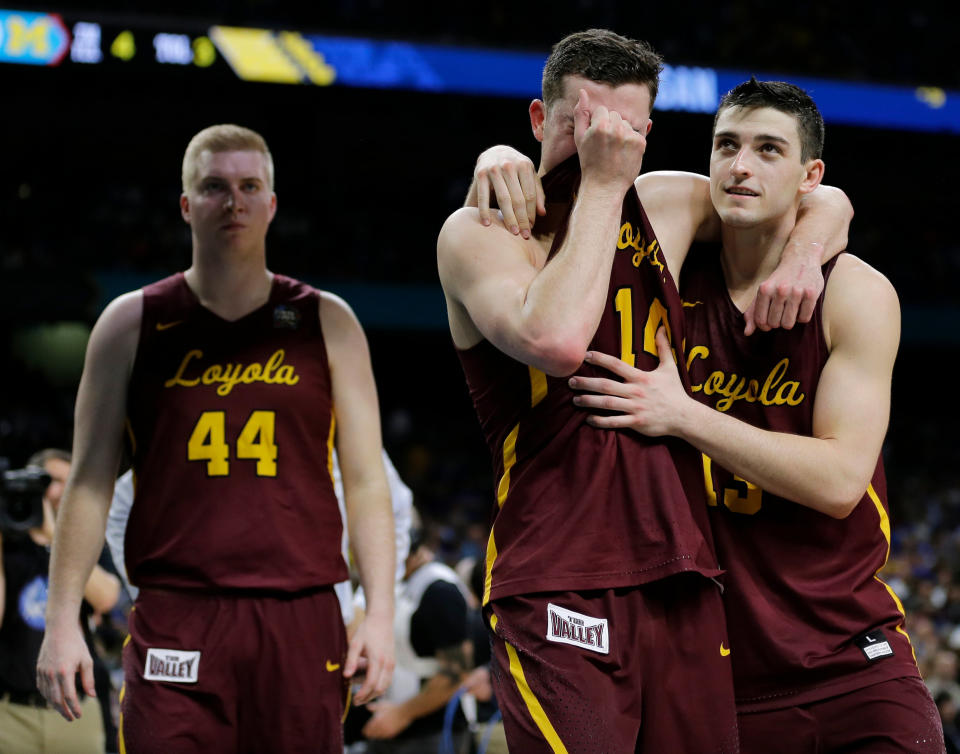
Raising the profile
When Moser took the job back in 2012, the Loyola brand was borderline non-existent. “When you said Loyola,” he recalls, “the first [response] was, ‘Is it Marymount? Maryland? New Orleans? Which Loyola?’ ”
Even his own campus, he says, looked like “Big Ten headquarters,” every sweatshirt a representative. In an attempt to boost student attendance, as recently as a few years ago, he’d hand out hot dogs and schedule magnets and posters – to little effect.
Now, he might arrive hours before tip and see a line of jersey-clad undergrads jockeying for game-watching position. He can walk down campus-adjacent Sheridan Road and see lamppost banners honoring his players. He can call an out-of-state recruit, begin explaining his usage of sophomore big man Cameron Krutwig, and get an, “Oh, yeah, I’ve watched him” coming through the phone.
March 2018 didn’t just transform lives; it transformed a program and a university. Donations to the athletic department soared. This past season, men’s basketball attendance spiked 54 percent year-over-year, and nearly doubled the per-night average from two seasons prior. Sixteen regular-season games were broadcast nationally – twice as many as the two previous years combined.
The university, meanwhile, welcomed the largest freshman class in its 148-year history, because it initially distributed acceptance letters at a standard rate. Then the run happened. Applications rolled in, resulting in a 7 percent year-over-year increase. No teenager in his or her right mind could resist the opportunity to buy a Sister Jean scarf or order the Sister Jean Sandwich at the student center’s Bleecker St. Café.
No individual life, though, changed more tangibly than Moser’s. The run netted him an extension and a significant raise. It pulled him in a dozen different directions at once, from celebrity fundraisers to TV sets. In the 10 days after his 2018-19 season ended, for example, he jetted around the country on recruiting trips as usual. He scouted a junior college tournament. But unlike before, he crammed in phone interviews. He spoke at a luncheon. He flew out to Atlanta to do March Madness studio analysis for Turner. For 12 months now, he has been testing the limits of his seemingly boundless energy.
But he doesn’t complain. The enlarged list of responsibilities, the attention, the expectations … “That means that they care,” Moser says. “That means that we’re relevant. If you’re not relevant, and they don’t care, there’s no expectations. If they care, and you’re relevant, and you got a fan base, there’s expectations. That’s what I’ve wanted to create. I can’t hate what I created.”
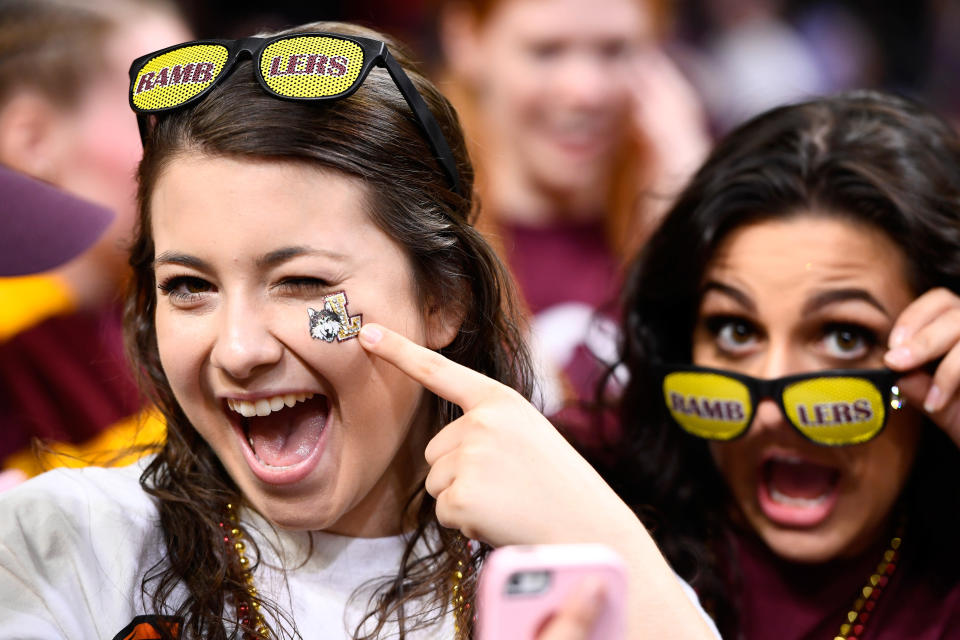
Where are they now?
A related March creation was opportunity. Ingram’s came from the Texas Legends, the Dallas Mavericks G League affiliate. Richardson signed on with a top-division playoff team in Poland. Jackson, despite having to rehab a meniscus injury over the offseason, spent the year playing professionally in Iceland.
“Going into my senior year,” Richardson says, “it wasn’t like I was gonna have a whole lot of opportunities.” Six months later, he had a pre-draft workout with the Bulls; an invite to a showcase event in Las Vegas; eyes that likely wouldn’t have otherwise been on him.
“You show up to those kind of things,” Richardson explains, “[Evaluators] see you, and they’re like, ‘Oh, you played in the Final Four.’ That, instead of, ‘What school’d you play for? Is that Division I?’ I would get that before my senior year, honestly.”
It isn’t that the three classmates were undeserving of opportunity. And each has made good on it. Ingram has held down a rotation spot. Richardson has played 28 minutes per game as an impactful defender and 3-point shooter. Jackson averaged 19.9 points against frequent double-teams.
It’s just that countless deserving small-college stars go unnoticed. For the Loyola trio, the tourney bump was real, the exposure meaningful.
It even compelled Townes to consider testing professional waters after his junior season. “Our name was hot,” he explains. “At an all-time high.” He returned to school, improved, earned the MVC Player of the Year award, and surely will get his pro chance. But resisting the urge to ride the wave was a risk.
Custer, on the other hand, is now undecided on whether he’ll pursue a pro career. “If I woulda been done after last year, it would’ve been really hard to not want to keep playing,” he says. Now, having spent a year out of the national spotlight, there are pros and cons to be weighed.
But Custer also understands that opportunity isn’t confined to basketball. If the run wasn’t scout fodder, it was the ultimate networking tool. Take, for example, the long text Custer received one day after his final game, from Cubs co-owner (and Loyola alum) Todd Ricketts, thanking him for what he’d done for the program and the school. “And if you ever want to come to a Cubs game,” Ricketts told Custer, “just let me know.”
“If I decide to just start into the business world, there’s a lot of Loyola alumni, there’s a lot of people who watched the Final Four, there’s a lot of people who would help any of these guys,” Custer says. Last March, he believes, will “open up a lot of doors for us” – no matter where those doors lead.
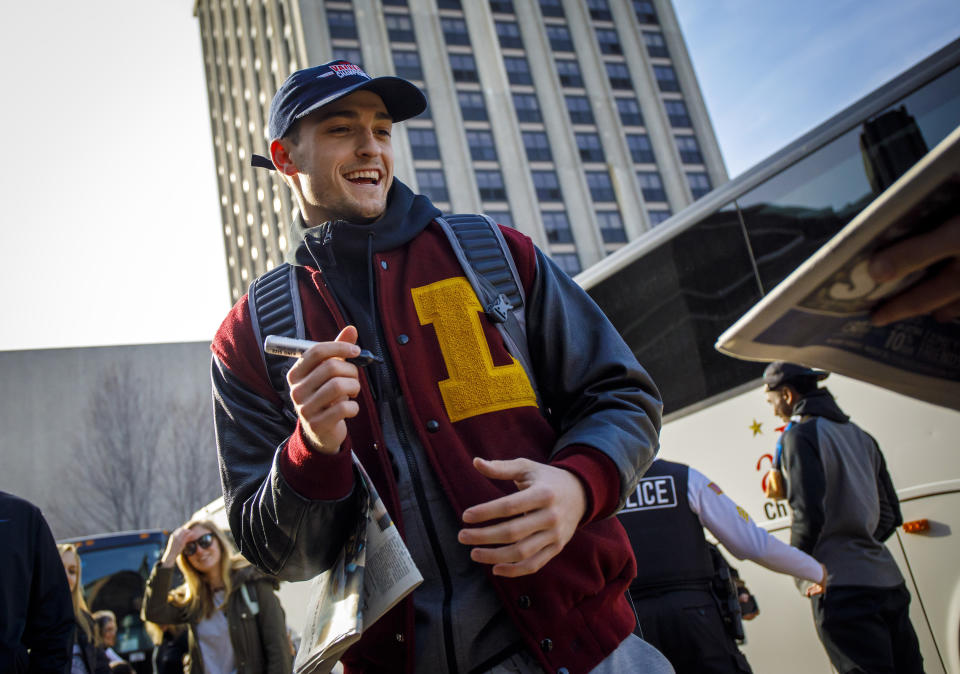
Peaking at 22
Over the past month, for some, the memories have come flooding back. Memories of the good times, the joy, the camaraderie and the impact. And memories of the bad; the pressure; the heartbreak. UCF’s post-Duke sobs triggered Moser’s emotions in the Turner studio. It took him back to San Antonio, to the bowels of the Alamodome, consoling an inconsolable Richardson, “almost literally having to hold him up as he was walking off the floor.”
“That was the way our locker room sounded,” Moser thought, his mind spinning. “You’re trying, as an adult, to address these guys, and tell ‘em what they mean to you and the university, you’re trying to tell them that. But all they can think about, their dreams just got shattered.”
What mattered, though, was not the broken dreams; it was the pursuit of them. The power of Loyola’s run lay in the shared experience.
There are, of course, physical mementos, like the white Final Four hat perched atop Custer’s head last week, or the FINAL4 license plate in the window of program spokesman Bill Behrns’ office. There is, as Custer calls it, the “big-ass banner” hanging from an on-campus parking garage. There are the Final Four backpacks, the one Jackson’s Icelandic teammates offered him money for. “Nah, this is one of a kind,” was his response. “I can’t give this one up.”
But the lasting memento is the bond. The one that won’t let last year’s team group chat die. Townes and Jackson talk everyday. Custer and Richardson do likewise. The chemistry with pro teammates, Ingram says, especially on fluid G League rosters, just isn’t the same.
Nor will anything, in all likelihood, ever match last March. It’s a thought that kept gnawing at me while reporting this story: What’s it like to peak at 22? I wondered whether players grappled with the question. So I asked it: Have you considered that, no matter what you do professionally, no matter what you achieve the rest of your life, it will almost certainly pale in comparison to those few weeks?
“Yeah, 100 percent,” Custer affirms. “I’ve thought about how that will probably be the best time of my life. It’ll probably be tied with the day I get married. Or better – better than the day I get married.” He laughs.
“And I’m pretty much cool with that,” Jackson says. “To be able to make it to the second-biggest stage … I’m OK with that being the highlight of my career.”
Richardson, though, has a different take. A powerful one. One that, like so many offshoots of this fairytale, transcends sport.
“Those kind of thoughts are definitely reasonable,” he says. “But … the whole reason that run happened is ‘cause we believed that something could happen that no one else did. So for me, now, that’s a lesson: Don’t ever underestimate yourself. Don’t ever sell yourself short. So whether it’s my basketball career or whatever I do next, I’m going to make a point to never sell myself short; to [never] say, ‘Oh, well I made it to the Final Four, I accomplished something,’ and stroll the rest of my life. To me, it just serves as something to motivate me to keep achieving. It’s something that I’ve thought about. But there’s only one mentality to have.”
More from Yahoo Sports:
– – – – – – –
Henry Bushnell is a features writer for Yahoo Sports. Have a tip? Question? Comment? Email him at henrydbushnell@gmail.com, or follow him on Twitter @HenryBushnell, and on Facebook.



